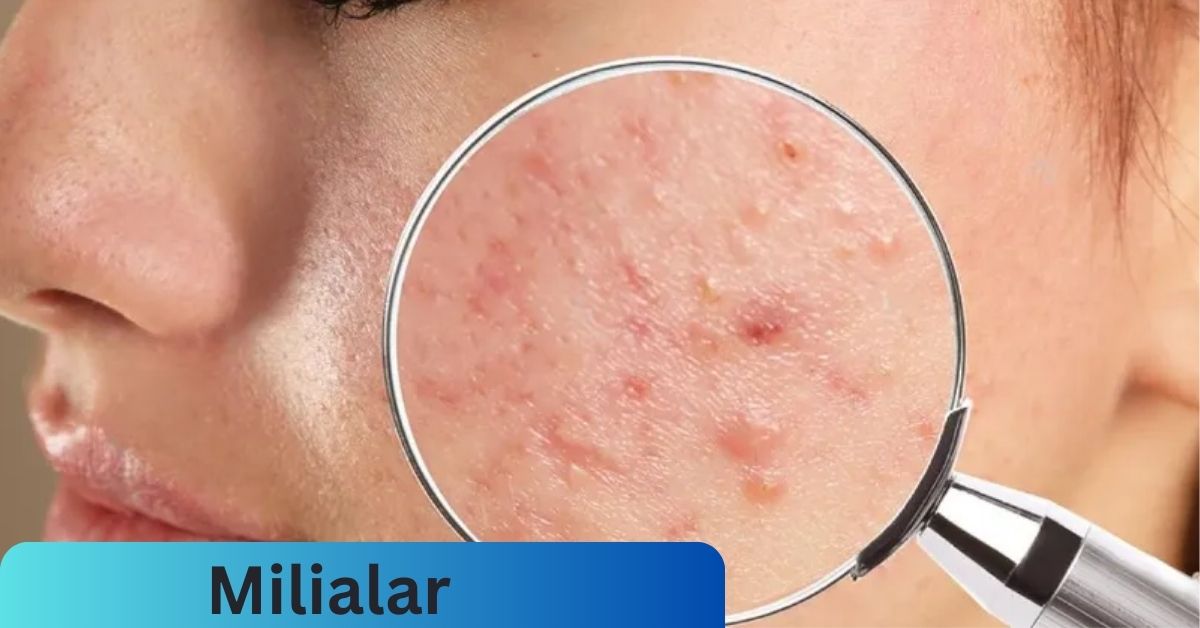Milia, often colloquially referred to as “milialar,” is a common skin condition that many individuals encounter at some point in their lives. These tiny, white cysts can appear on the skin, causing concern and prompting questions about their origin, treatment, and prevention. In this comprehensive guide, we’ll delve into the intricacies of milialar, exploring its symptoms, causes, and effective treatment options.
Understanding Milia:
Milia are small, round, white cysts that typically develop on the skin’s surface. These cysts are often mistaken for whiteheads, but they differ in their origin and composition. Milia occur when keratin, a protein found in skin cells, becomes trapped beneath the skin’s surface, forming small cysts. Unlike acne, milia are not associated with sebaceous (oil) glands, and they can appear on various parts of the body.
The Anatomy of Milialar:
Understanding the root causes of milialar is crucial for effective treatment and prevention. Several factors contribute to the development of milia:
- Skin Cells and Keratin Buildup: Milia result from the accumulation of keratin, a protein that forms the outer layer of the skin. When excess keratin becomes trapped, it forms tiny cysts.
- Newborns and Infants: Milia are common in newborns and infants, appearing on the face—particularly on the cheeks and nose. This occurrence is often temporary and resolves on its own.
- Trauma and Burns: Skin trauma or burns can lead to milialar cysts. The healing process may involve the trapping of keratin, causing these cysts to form.
- Skincare Products: Certain skincare products, especially those that are too heavy or occlusive, can contribute to milia development. Using non-comedogenic products is essential for preventing their occurrence.
- Lack of Exfoliation: Inadequate exfoliation can lead to the accumulation of dead skin cells, contributing to milialar cyst formation. Incorporating gentle exfoliation into your skincare routine can help prevent and treat milia.
Recognizing Milia:
Identifying milia involves recognizing their distinct characteristics. These cysts are typically small, white or yellowish in color, and may appear as singular or multiple bumps. Unlike acne, milia are firm to the touch and do not contain pus.
If you suspect you have milia or are unsure about a skin condition, seeking the expertise of a dermatologist is essential. Dermatologists can accurately diagnose milialar cysts and provide tailored recommendations for treatment.
Treatment Approaches:
- Professional Extraction: Dermatologists can perform a simple extraction procedure to remove milia using a sterile needle or scalpel. This should only be done by a qualified professional to avoid infection and scarring.
- Chemical Peels: Chemical peels, when administered by a dermatologist, can help exfoliate the skin, preventing the buildup of dead skin cells and reducing the risk of milia formation.
- Topical Retinoids: Prescription-strength retinoid creams can promote cell turnover, preventing the trapping of keratin and reducing the appearance of milialar cysts.
- Skincare Routine Adjustment: Adopting a proper skincare routine is crucial for managing and preventing milia. Use non-comedogenic products, avoid heavy creams, and incorporate gentle exfoliation.
Milia and Genetics:
While milia are often associated with external factors, there may be a genetic predisposition to their development. Some individuals may be more prone to milia due to their genetic makeup. Understanding your family history can provide valuable insights into your skin’s tendencies and guide preventive measures.
The Role of Oil in Milialar Formation
Contrary to common acne, milia are not associated with excess oil production. However, individuals with oily skin may still experience milia, emphasizing the importance of balancing skincare routines to address specific skin needs without exacerbating milialar cyst formation.
Prevention is Key:
- Gentle Exfoliation: Regular, gentle exfoliation helps prevent the buildup of dead skin cells, reducing the risk of milia.
- Non-Comedogenic Products: Opt for skincare products labeled as non-comedogenic to avoid pore blockage and milia formation.
- Balanced Skincare Routine: Tailor your skincare routine to your skin type, avoiding heavy creams and incorporating products that promote healthy skin turnover.
Milialar in Perspective:
While milia can be a cosmetic concern, it’s important to recognize that they are generally harmless and do not indicate a severe skin condition. Understanding the factors contributing to milia formation empowers individuals to take proactive measures in their skincare routines, promoting overall skin health.
In conclusion, milialar, though a common and often temporary skin condition, can be effectively managed with the right knowledge and skincare practices. Consulting with a dermatologist, adopting a balanced skincare routine, and understanding individual risk factors are essential steps in addressing and preventing milia. By demystifying milialar, individuals can embrace healthy and radiant skin.
